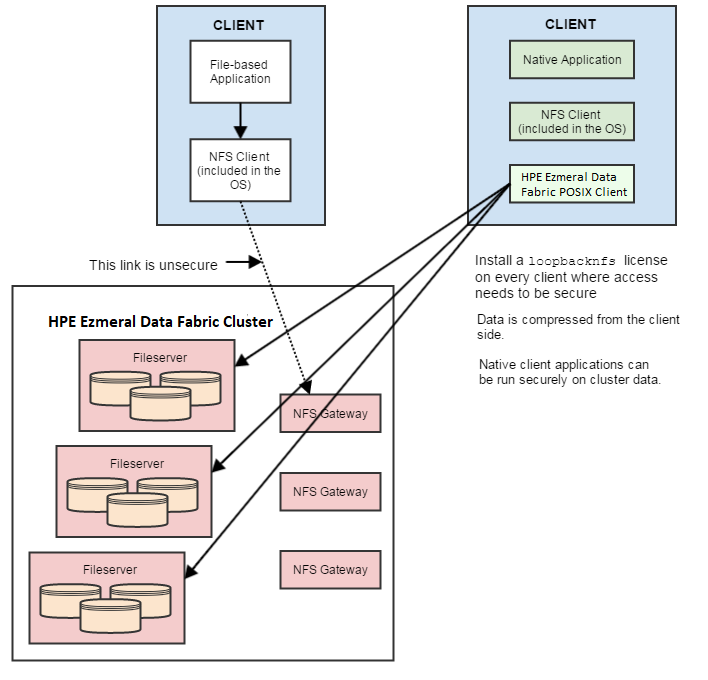HPE Ezmeral Data Fabric loopbacknfs POSIX Client
Explains the differences between the HPE Ezmeral Data Fabric POSIX client and the Linux native NFS client.
The HPE Ezmeral Data Fabric POSIX
Client feature allows app servers, web servers, and other client nodes and apps to read and
write directly to a HPE Ezmeral Data
Fabric cluster. Starting with the 4.0.2 release, HPE Ezmeral Data Fabric provides single-user
loopbacknfs licenses that give access to one or more clusters.
| Linux OS Client | HPE Ezmeral Data Fabric POSIX Client | |
|---|---|---|
| Client OS |
|
|
| Installs On Node Type |
|
|
| Access to Cluster |
|
|
| Supported Interfaces |
|
|
| Connection to File System |
|
|
| Security |
|
|
The Linux OS NFS client must go through an NFS gateway, the link to the gateway is not secured, and transmitted data is not compressed.
The following diagram illustrates how the HPE Ezmeral Data Fabric POSIX client
(mapr-loopbacknfs) works, in comparison with the Linux OS NFS client
(left).

The instructions on this page are for the HPE Ezmeral Data Fabric POSIX client. For instructions on setting up NFS on a HPE Ezmeral Data Fabric cluster, see Managing the HPE Ezmeral Data Fabric NFS Service.
| Cluster Security Disabled | Cluster Security Enabled | |
|---|---|---|
| Client Node |
|
|
| Cluster Node |
|
|